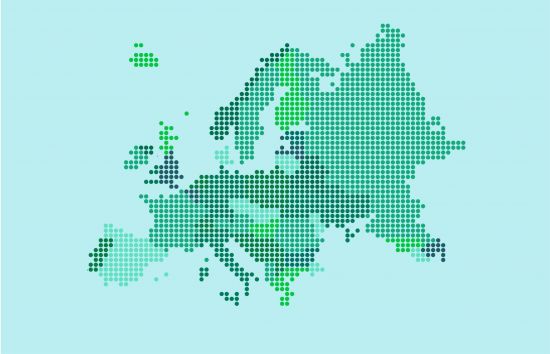
Data for a greener and more digital Europe
Paula Lopez
One of the European Commission’s two key priorities for the future is for Europe to become a carbon-neutral continent by 2050, meaning a severe decoupling of economic growth and resources consumption. This challenge will require active engagement across all sectors and will undoubtedly affect aviation. Under the Green Deal framework, Europe has adopted a set of proposals that includes specific policies on climate, energy, transport and taxation supported by an unprecedented budget of 0.6 trillion euros by 2030 (one-third of the NextGenerationEU Recovery Plan and Horizon Europe budget).
The European Commission’s second priority is to foster industries, citizens and public administrations to embrace the digital transition. The Digital Europe programme alone has been allocated with 7 billion euros to address this challenge, with additional funding allocated through other European Programmes, all of which contain components that can push the European ecosystem to higher levels of digitalisation. While these two objectives of carbon neutrality and digitalisation are enormously challenging on their own, digital technologies can also help optimise certain industries and, as a result, make them more sustainable and environmentally friendly. This may be achieved through optimised operations, smarter use of resources, improved manufacturing, maintenance or recycling processes, etc. Of course, though this may be the case in any industry, this process of increasing sustainability through digitalisation especially affects aviation.
While aviation only causes 2-4% (depending on the source) of all human-induced CO2 emissions (around 12% of all transport sources), there is strong social and political pressure to make our industry commit to very strict emission reduction levels. This trend has been significantly accelerated since the COVID-19 pandemic, which has introduced an opportunity to revitalise the aviation sector to be greener. In addition to the economical support of R&D&i programmes, such as Clean Sky/Clean Aviation or SESAR, the European Commission has adopted a series of legislative proposals intended at achieving climate neutrality in the EU by 2050 and at least 55% net reduction in greenhouse gas emissions by 2030.
How can we put data at work to reduce aviation emissions?
Data is a key asset for accurately measuring fuel consumption and, consequently, aviation emissions. In most cases, flights do not follow the most efficient flight profile or route (e.g. according to delay recovery, congestion at certain sectors, meteorological aspects, etc). Current emission models aren’t accurate enough to reliably analyse the extra fuel burnt due to deviations from from these optimal flight profiles or routes, which can be critical information to know both at the airline and ATC level. That said, reliable data could enable the measurement of environmental costs per certain instructions, such as holding, re-routing, etc. This, in turn, would enable the establishment of target levels and continuous monitoring of the environmental performance for relevant actors (ATCs, airlines, etc.).
Leveraging historical data, data science and ML techniques, Innaxis participates in two CleanSky2 projects: Pilot3 and Dispatcher3. These projects aim to enable airlines—pilots and dispatchers respectively—to choose among several flight alternatives depending on their priorities (arrival time, fuel burnt, IROPs, other costs, etc.) and compare among them. These estimators are forecasted for each of the alternatives, reducing uncertainty through data science. Accordingly, if a pilot plans to deviate from the flight plan, he would be informed of the potential flight delay and costs, similar to what a car driver receives from a navigation system. In the future, options with higher environmental impact may not be allowed. For this, reliable, data-driven models will be needed. Keep an eye on upcoming publications from Innaxis to learn more about what are we developing in this line.


